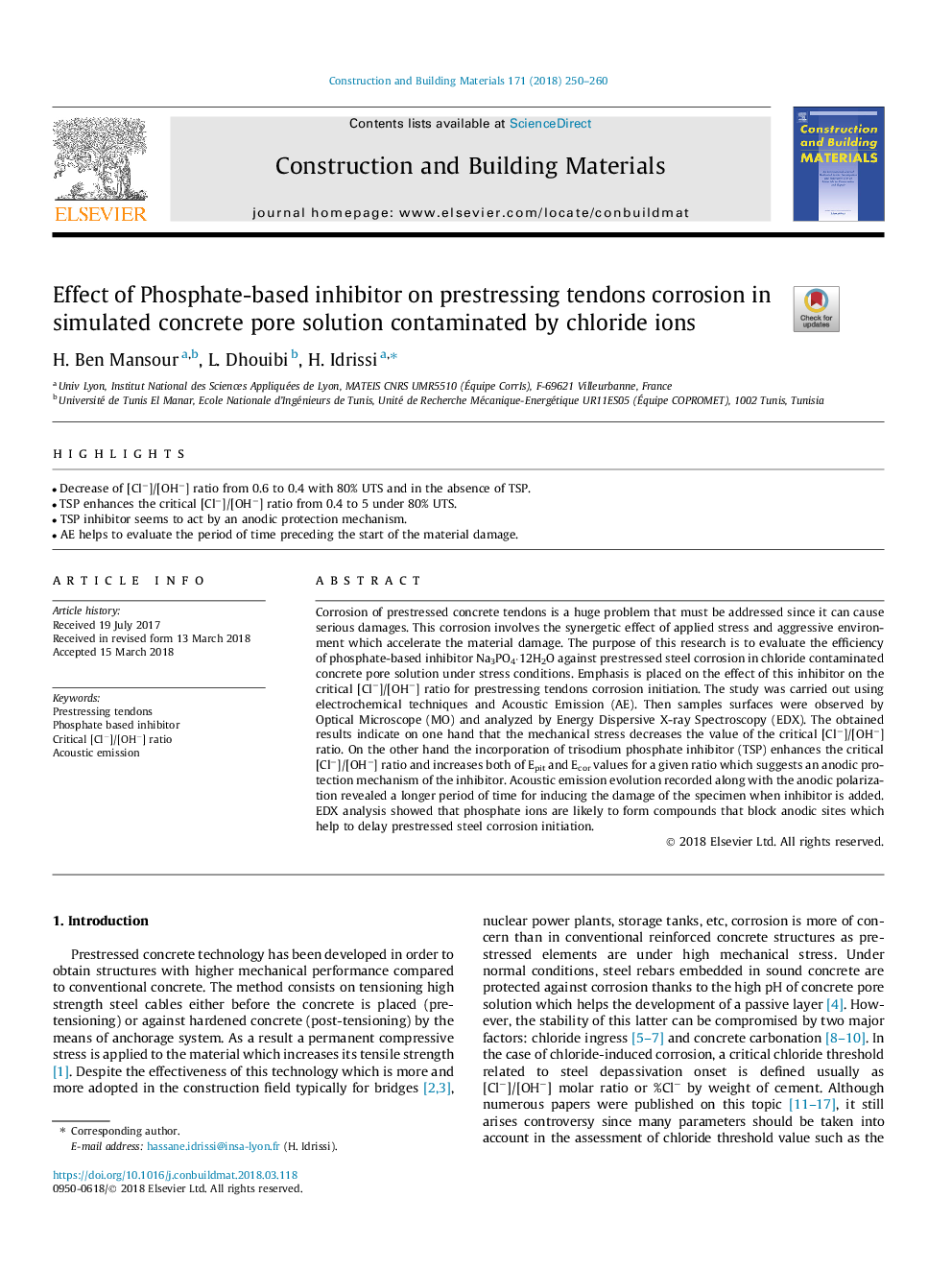| Article ID | Journal | Published Year | Pages | File Type |
|---|---|---|---|---|
| 6714042 | Construction and Building Materials | 2018 | 11 Pages |
Abstract
Corrosion of prestressed concrete tendons is a huge problem that must be addressed since it can cause serious damages. This corrosion involves the synergetic effect of applied stress and aggressive environment which accelerate the material damage. The purpose of this research is to evaluate the efficiency of phosphate-based inhibitor Na3PO4·12H2O against prestressed steel corrosion in chloride contaminated concrete pore solution under stress conditions. Emphasis is placed on the effect of this inhibitor on the critical [Clâ]/[OHâ] ratio for prestressing tendons corrosion initiation. The study was carried out using electrochemical techniques and Acoustic Emission (AE). Then samples surfaces were observed by Optical Microscope (MO) and analyzed by Energy Dispersive X-ray Spectroscopy (EDX). The obtained results indicate on one hand that the mechanical stress decreases the value of the critical [Clâ]/[OHâ] ratio. On the other hand the incorporation of trisodium phosphate inhibitor (TSP) enhances the critical [Clâ]/[OHâ] ratio and increases both of Epit and Ecor values for a given ratio which suggests an anodic protection mechanism of the inhibitor. Acoustic emission evolution recorded along with the anodic polarization revealed a longer period of time for inducing the damage of the specimen when inhibitor is added. EDX analysis showed that phosphate ions are likely to form compounds that block anodic sites which help to delay prestressed steel corrosion initiation.
Related Topics
Physical Sciences and Engineering
Engineering
Civil and Structural Engineering
Authors
H. Ben Mansour, L. Dhouibi, H. Idrissi,
